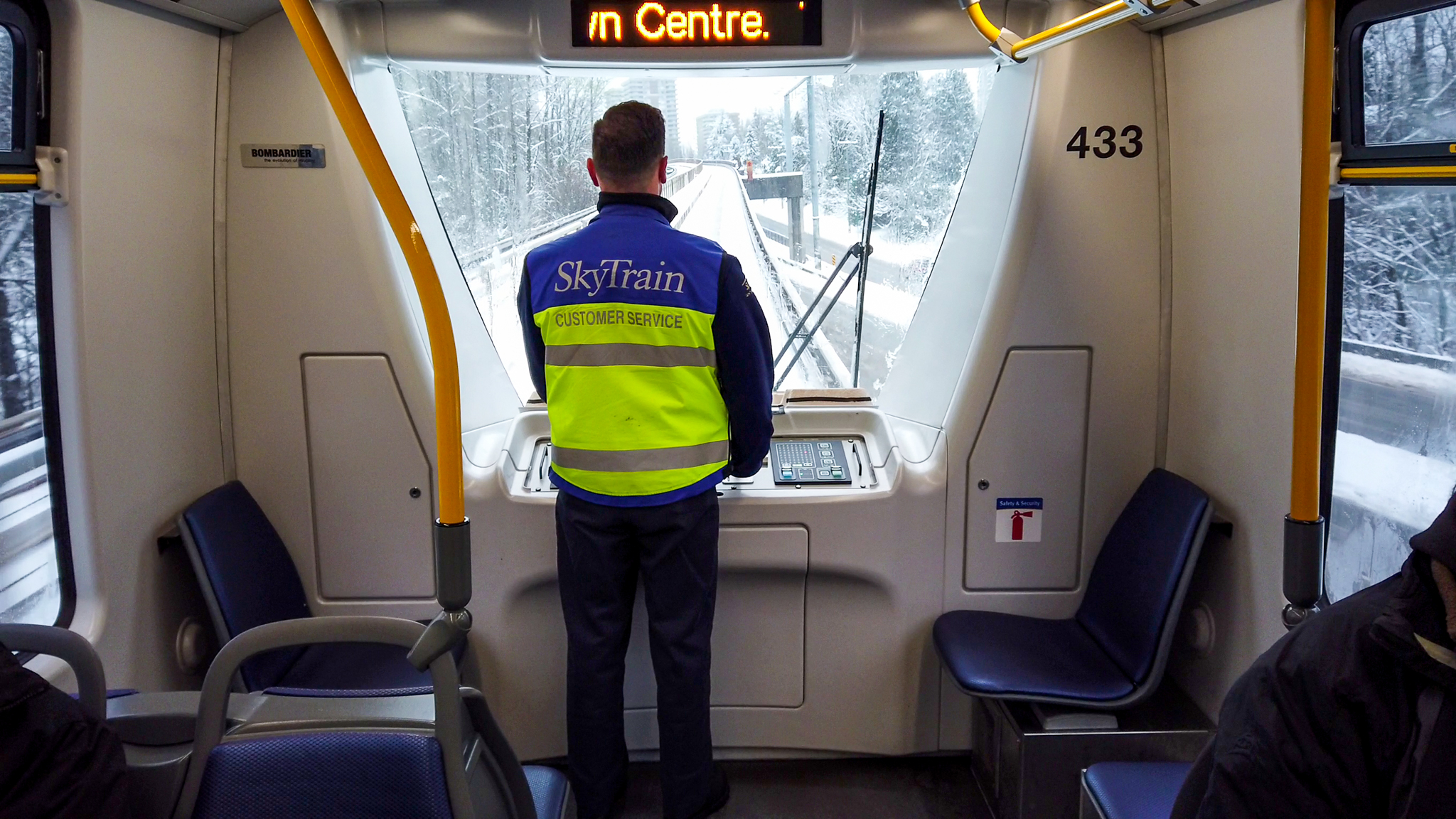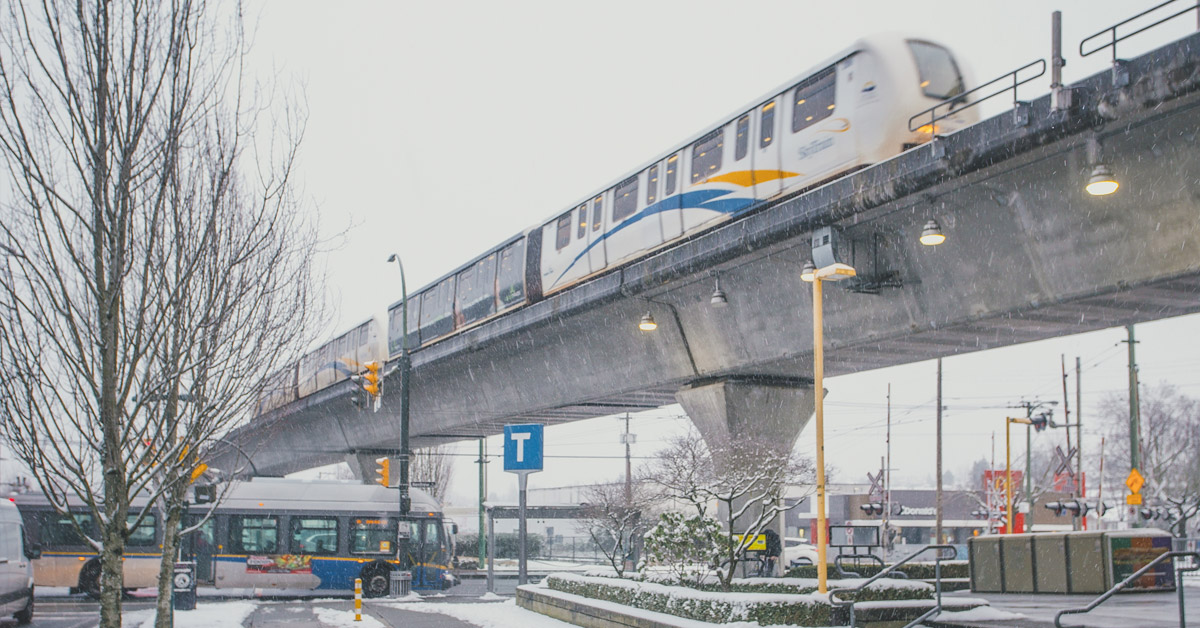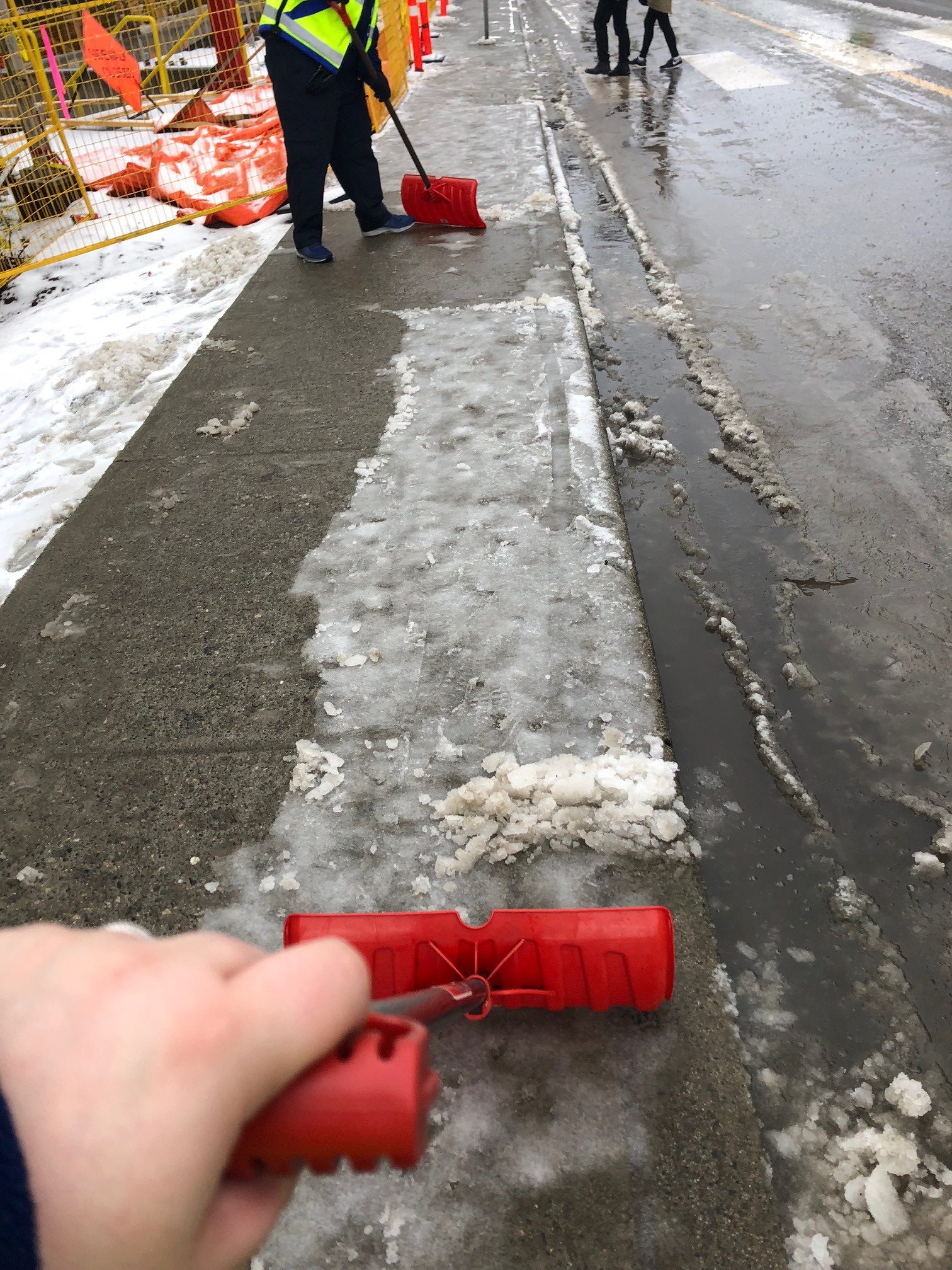This is why you see SkyTrain Attendants onboard during snow
This is why you see SkyTrain Attendants onboard during snow

Nothing is immune when adverse winter weather wallops a city. There’s no panacea, but the accompanying challenges can be mitigated through smart planning.
The transit system is no different. We have a wide-ranging snow plan that covers every aspect of our operations and staff work around the clock to ensure transit service stays as reliable as possible.
One of the tools in our toolbox is staffing every train across the SkyTrain network. The backbone of any automated rapid transit system are its sensors and its computers. An important one for the SkyTrain is the intrusion detection system that monitors the tracks for obstructions.
During adverse winter weather, falling snow and ice can trigger the intrusion system and lead to trains emergency braking.
That’s why SkyTrain Attendants are positioned at platform level in the station or onboard trains in the front end to actively monitor the tracks for any obstructions. This limits emergency braking and helps maintain consistent and reliable service.
The trains continue to operate automatically, but at slower than usual speeds. SkyTrain Attendants can safely stop and manually operate the trains if required, but their primary role onboard the trains is to monitor the tracks.
Since the trains are operating slower than usual and are staffed by SkyTrain Attendants, there may be longer than usual waits at platforms for customers. Trains cannot operate without a SkyTrain Attendant onboard during adverse weather.
Operationally you may hear us call this longer wait “a gap in service” because the distance — or gap — between trains is lengthened.
You may notice a longer than usual wait on the Millennium Line when we operate four-car trains as opposed to the usual two-car trains during adverse weather. This allows us to smartly staff all the trains, while carrying the same number of passengers as normal.

You may be wondering how.
Hypothetically, let’s say there’s 16 SkyTrain cars assigned to the Millennium Line. If we operate them as two-car trains as normal, we’d have eight trains and that would require eight SkyTrain Attendants to staff. However, if we create four four-car trains from the 16 cars assigned to the Millennium Line, it requires only four SkyTrain Attendants to staff.
There is no decrease in number of SkyTrain cars assigned to and operating on the Millennium Line. The only change is how often the train comes, resulting in a longer than usual wait for customers. The number of passengers it carries stays the same, but it allows us to maximize staff availability to perform other essential duties to keep service operating safely and reliably.
Transit staff are doing everything they can to ensure transit continues to operate. Extra SkyTrain Attendants are on trains and in stations clearing snow and ice from the platforms and doors. ^at pic.twitter.com/omWTQlMZq6
— TransLink BC (@TransLink) January 15, 2020
Another reason for longer than usual waits at platforms during adverse weather is just day-to-day delays on the system.
In an ideal state, the trains are spaced out equally throughout the system and they arrive at stations at a consistent interval. A gap in service happens when a train is delayed at a SkyTrain station, while all the other trains continue according to their schedule.
This increases the “gap” between the delayed train and the preceding train, which leads to a longer than usual wait at the platforms for customers. Check out this video from the New York City Subway that visually explains this.
A train can be delayed at a station for myriad reasons, including a medical emergency on board a train or as seemingly benign as customers holding doors open at stations.
Holds may also be instituted by SkyTrain Control for technicians to clear snow and ice from the doors using hockey sticks, so doors don’t freeze. A gap in service can also happen when a train is pulled from service for repairs.
There are a number of strategies we undertake to close this gap in service and return to usual wait times. One way is by holding the train preceding the gap at the station to allow for the next train to catch up.
We thank customers for their patience this winter season. Our staff are working diligently, using every tool in the toolbox to keep transit moving safely and reliably.







I love the skytrain! Thanks for all the staff that keeps it going!
The picture of the Skytrain in the story is very misleading because on the snowy day on the 6th Translink were running 3 cars not 6 with either end blocked off and cramped full and stopping at each station for a good 10 minutes.
” your train maybe delayed”
There is no possible configuration with any model of skytrain that allows for 3 car trains. They are all permanently in sets of 2 or 4. This means that the only possible configurations are 2, 4, and 6 for Mk. Is
Would be ideal if the interior lights on the trains stayed on the the attendants monitor the tracks on board. Boarded a train last night with an attendant on board and the lights were off making the train way too dark
They have to be able to see out the window, which is keeping YOU SAFE. So relax Karen.
Nice to know where my money is going.
Please remind people not to hold the doors open! They are the Achilles heel of the system – if they’re held for too long or too many times, the train gets stuck. Also, when it’s really busy, and trains and platforms really crowded, it takes much longer for people to get on and off trains. Keeping the doors open longer is very helpful!
So you cut the staff by half to make it twice as safe using half the staff or you simply eliminated jobs, Which is it?
David, having staff onboard the Skytrains is not typical in operation 99% of the year, so any attendants required to monitor the trains during snow are staff that are being taken away from their USUAL job. It’s quite obvious that this is an extra job being CREATED during inclement weather, so minimizing the amount of staff who have to stop doing their normal duties in order to monitor the tracks is beneficial to the rest of the system running more smoothly. No jobs are being eliminated here…
That is so cool that skytrain attendants are capable of driving the trains! Wow this is so cool I’m going to post it on a transit forum group I belong to! Maybe 1 day I’ll ask the attendant if I can take the controls!
I love the sky trains and the transit buses but there are couple of issues I would like to point out!
There should be more announcements for young kids (students) to offer their seats to seniors specially during rush hours. I have often seen older generation having a hard time holding onto the rails or fall down.
Its quite painful to see Young school students taking up the front (seniors / disabled) seat either “pretending to sleep with their face covered with the hoodies ” or playing games and completely ignoring whose standing beside them.
I think the attendants should take a quick check inside trains before the train /bus departs.